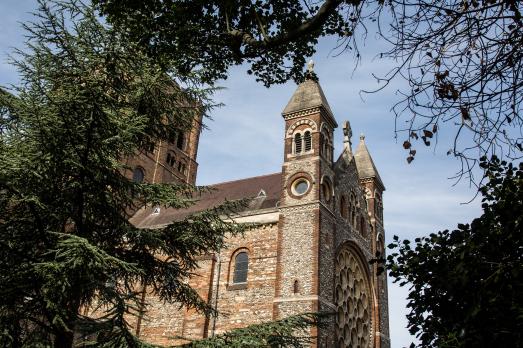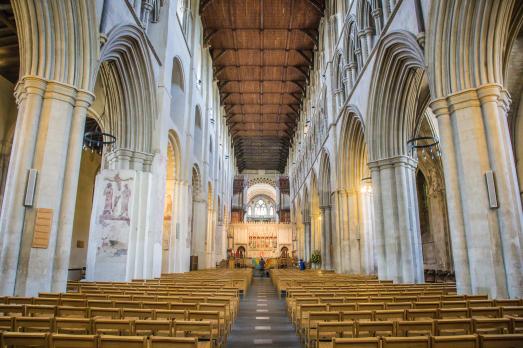Tradition claims that a monastery was founded here in 793 by King Offa of Mercia. We know little of this early foundation other than that it was a double house of both men and women and that it followed the rule of St Benedict. The first Norman abbot, Paul of Caen, was appointed in 1077 and immediately set about rebuilding the Abbey church in the Norman (or Romanesque) style, starting with the great tower. This Norman church was built from bricks and tiles stockpiled from the ruined Roman town of Verulamium. It was completed in 1115 under Abbot Richard d'Albini. St Alban's Abbey, with the shrine of England's first martyr, became prestigious and important. Throughout most of the medieval period it was England’s premier Benedictine abbey with numerous daughter houses stretching from Tynemouth in the north to Binham near the Norfolk coast. A second shrine, dedicated to St Amphibalus, was erected in the 12th century after bones thought to be those of the priest saint were discovered at Redbourn and moved to the Abbey.
Famous chroniclers who were monks here included Roger of Wendover, Matthew Paris and Thomas Walsingham: their writings are still valuable historical sources. Among the monks we find not only theologians, philosophers and historians but also artists such as Walter of Colchester, poets, scientists and even a very early clockmaker, Abbot Richard of Wallingford. Perhaps the most successful son of St Albans was Nicholas Breakspear, whose father was a tenant of the Abbey. Originally refused admittance as a monk a St Albans, in 1154 Nicholas became Pope Adrian IV, the only English pope. He is commemorated on the High Altar Screen.
The Abbey was a self contained community. The buildings included a great gateway, cloisters, a refectory, kitchens, storerooms and dormitories. The long stable block could house 200 horses, the Abbey was one day's ride from London. At its height there were approximately 100 choir monks and, although numbers never quite recovered after the Black Death in 1348-50, it appears that the monastery remained vibrant and a significant place of learning until its closure in 1539. It possessed one of the earliest printing presses in England. Today the surviving buildings of the great medieval Abbey can be seen in the strong, sturdy gatehouse and the central core of the church, including its magnificent tower.









